History
 People joke about being tired after they retire, or at least that is what the hats all say, but I don’t really think that is the case most of the time. After all, let’s face it, when you are retired, you can sleep in as long as you choose, and if that still isn’t enough, well, just take a nap in the afternoon. I think that most retired people get up early, because of that afternoon nap. Seriously, there are only so many hours that a person can sleep. I don’t know if my brother-in-law, Lynn Cook is one of those early risers, who nap in the afternoon, but it wouldn’t surprise me at all.
People joke about being tired after they retire, or at least that is what the hats all say, but I don’t really think that is the case most of the time. After all, let’s face it, when you are retired, you can sleep in as long as you choose, and if that still isn’t enough, well, just take a nap in the afternoon. I think that most retired people get up early, because of that afternoon nap. Seriously, there are only so many hours that a person can sleep. I don’t know if my brother-in-law, Lynn Cook is one of those early risers, who nap in the afternoon, but it wouldn’t surprise me at all.
Many retired people head south for the winter, or travel all over the country during the rest of the year, but for Lynn, and my sister-in-law, Debbie, the big draw that retirement held, was camping in the Big Horn Mountains. Their idea of a relaxing time is being in the quiet of the mountains, preferably with just the birds and other wildlife as neighbors, unless their kids come up to join  them, that is. During the summer months, they will stay in the mountains for weeks at a time, unless some specific thing requires them to come back to town, and back to reality. I think lots of people would call that a little slice of Heaven on Earth. I would have to agree that being in the mountains is most likely right where I would want to be too, but Bob and I would most likely not want to camp out, however. We like to hike, and then we want the comfort of a motel room…at this point anyway.
them, that is. During the summer months, they will stay in the mountains for weeks at a time, unless some specific thing requires them to come back to town, and back to reality. I think lots of people would call that a little slice of Heaven on Earth. I would have to agree that being in the mountains is most likely right where I would want to be too, but Bob and I would most likely not want to camp out, however. We like to hike, and then we want the comfort of a motel room…at this point anyway.
Since Lynn used to drive truck for a living, and was always on the road, long term travel doesn’t really appeal to him much, but the short drive to the Big Horns is something he really likes. He is getting a little better about other travel on occasion now too, but as far as I know a long trip means driving from Powell, Wyoming to  Casper, Wyoming…not exactly what most of us would consider a long trip, but it’s a pretty big step for him.
Casper, Wyoming…not exactly what most of us would consider a long trip, but it’s a pretty big step for him.
Since his retirement, Lynn has become more and more of a mountain man than ever before. I think there was always a bit of Jeremiah Johnson in him, but since he would live on the mountain in a tent these days, he seems more and more so. Even then, I can’t exactly blame him. I would love to have a cozy cabin in the mountains where I could hole up sometimes…especially when the responsibilities of life get a little too overwhelming. Today is Lynn’s birthday. Happy birthday Lynn!! Have a great day!! We love you!!
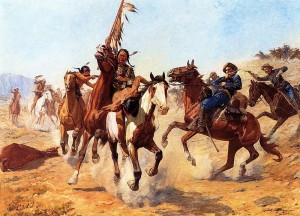 I don’t always think of myself as living in a historic area, although I should, because during the days of the Old West, at least, much history happened here. In fact, on this day, July 28, 1865, twenty year old Caspar Collins…a gutsy lieutenant from Dogwood Knob and Hillsboro, Ohio led 20 men to fight a battle against 1,000 to 3,000 Indians, just outside Platte Bridge Station, which was near Casper, Wyoming, where I live. The battle had been coming, and everyone knew it. The Lakota Sioux and the Cheyenne Indians had been attacking the United States Army for a couple of months now. The Indians had raided outposts and stagecoach stations over a wide area of Wyoming. On this day back in 1865, the Indians assembled their warriors and descended on Platte Bridge Station. The Platte River bridge was guarded by 120 men near the bridge, and another 28 soldiers guarded a wagon train a few miles away. The Indians killed 29 soldiers, while only losing 8 warriors in the raid.
I don’t always think of myself as living in a historic area, although I should, because during the days of the Old West, at least, much history happened here. In fact, on this day, July 28, 1865, twenty year old Caspar Collins…a gutsy lieutenant from Dogwood Knob and Hillsboro, Ohio led 20 men to fight a battle against 1,000 to 3,000 Indians, just outside Platte Bridge Station, which was near Casper, Wyoming, where I live. The battle had been coming, and everyone knew it. The Lakota Sioux and the Cheyenne Indians had been attacking the United States Army for a couple of months now. The Indians had raided outposts and stagecoach stations over a wide area of Wyoming. On this day back in 1865, the Indians assembled their warriors and descended on Platte Bridge Station. The Platte River bridge was guarded by 120 men near the bridge, and another 28 soldiers guarded a wagon train a few miles away. The Indians killed 29 soldiers, while only losing 8 warriors in the raid.
In reality, the Army was unprepared for this attack or the ones leading up to it. Colonel Thomas Moonlight had led a 500 Cavalry force out to seek out and punish the raiding Indians on May 26, 1865. He hung to minor Oglala leaders…Two Face and Black Foot. He left them hanging for days. I’m sure this infuriated the Indians. On June 3, the army began to worry that the 1,500 Lakota, mostly Brulé, and Arapaho who were living near Fort Laramie, might become hostile. So they decided to move them about 300 miles east to Fort Kearny in Nebraska. The Indians protested that Fort Kearny was in the territory of their traditional enemies, the Pawnee. The next day, near present day Morrill, Nebraska, most of the Indians refused to accompany the soldiers and 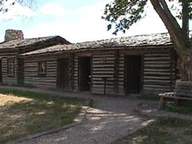 began crossing the North Platte River, assisted by Crazy Horse and a band of Oglalas on the other side. Attempting to stop them, Captain William D. Fouts and four soldiers were killed. Informed of the disaster, Moonlight departed Fort Laramie with 234 cavalry to pursue the Indians. He traveled so fast that many of his men had to turn back because their horses were spent. On June 17, near present day Harrison, Nebraska, the Lakota raided his horse herd and relieved him of most of his remaining horses. Moonlight and his men had to walk 60 miles back to Fort Laramie. He was severely criticized by his soldiers for being drunk and not setting a guard on his horses. On July 7, Moonlight was relieved of his command and mustered out of the army.
began crossing the North Platte River, assisted by Crazy Horse and a band of Oglalas on the other side. Attempting to stop them, Captain William D. Fouts and four soldiers were killed. Informed of the disaster, Moonlight departed Fort Laramie with 234 cavalry to pursue the Indians. He traveled so fast that many of his men had to turn back because their horses were spent. On June 17, near present day Harrison, Nebraska, the Lakota raided his horse herd and relieved him of most of his remaining horses. Moonlight and his men had to walk 60 miles back to Fort Laramie. He was severely criticized by his soldiers for being drunk and not setting a guard on his horses. On July 7, Moonlight was relieved of his command and mustered out of the army.
The Platte River bridge was a key crossing point of the North Platte River for wagon trains of emigrants traveling the Oregon and Bozeman Trails. The Indians wanted to stop traffic on the Bozeman Trail which led through the heart of their hunting territory. The bridge had been constructed in 1859 and was almost 1,000 feet long and 17 feet wide. On July 20, Indian leaders made their final decision to launch an attack against the bridge. The warriors gathered and set out southward from the mouth of Crazy Woman Creek on the Powder River. The Platte River Bridge was 115 miles south. The army was the largest they had ever seen. It was estimated to number 3,000 men. U.S. army accounts state that the wagons were forced into a hollow where they held out for four hours, using fire from Spencer rifles to repel assaults until a large group closed on foot and overwhelmed the defenders, killing all.
Then came the attack of Platte Bridge Station. The battle that left 29 men dead…including Lieutenant Caspar 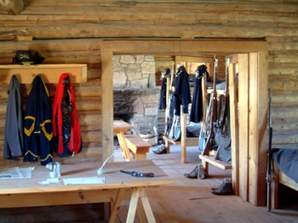 Collins, and at least 10 more men seriously injured. The battles before had involved maybe 1000 Indians. This battle was different…this one involved 3000. They were seriously outnumbered, but Lieutenant Caspar Collins went out to fight anyway. The day after the battle, the Indian army broke up into small groups and dispersed. A few remained near the Oregon Trail for raiding but most returned to their villages in the Powder River country for their summer buffalo hunt. Indians lacked the resources to keep an army in the field for an extended period of time. The Army officially renamed Platte Bridge Station to Fort Caspar to honor Collins, using his given name to differentiate the post from an existing fort in Colorado named after Collins’ father.
Collins, and at least 10 more men seriously injured. The battles before had involved maybe 1000 Indians. This battle was different…this one involved 3000. They were seriously outnumbered, but Lieutenant Caspar Collins went out to fight anyway. The day after the battle, the Indian army broke up into small groups and dispersed. A few remained near the Oregon Trail for raiding but most returned to their villages in the Powder River country for their summer buffalo hunt. Indians lacked the resources to keep an army in the field for an extended period of time. The Army officially renamed Platte Bridge Station to Fort Caspar to honor Collins, using his given name to differentiate the post from an existing fort in Colorado named after Collins’ father.
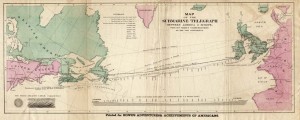 Communications have come a long way over the years. Still, most of us give little thought to how difficult it used to be in the not so distant past. Of course, letters were originally the only form of distant communications, and I suppose that some people, like my Uncle Bill, still think that is the best form of communication there ever was. These days, I would have to agree with them in many ways, but there are times when a letter is not quick enough. When the telegraph was invented in the 1830s and 1840s, it revolutionized communication. No longer did it take months to get an important message to family members. Prior to that time, a loved on might be dead for months before the family found out. I’m sure that in most cases, people still relied on letters for most things, so receiving an unexpected telegraph was probably a little scary.
Communications have come a long way over the years. Still, most of us give little thought to how difficult it used to be in the not so distant past. Of course, letters were originally the only form of distant communications, and I suppose that some people, like my Uncle Bill, still think that is the best form of communication there ever was. These days, I would have to agree with them in many ways, but there are times when a letter is not quick enough. When the telegraph was invented in the 1830s and 1840s, it revolutionized communication. No longer did it take months to get an important message to family members. Prior to that time, a loved on might be dead for months before the family found out. I’m sure that in most cases, people still relied on letters for most things, so receiving an unexpected telegraph was probably a little scary.
While telegraph made communications easier in our own country, trying to get an important message to someone from the homeland…not so much. Not until 1866, that is. Early attempts were made to lay 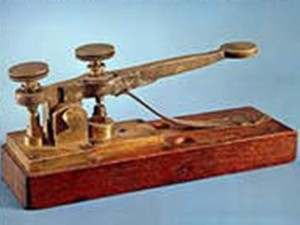 Transatlantic cable for the telegraph in the late 1850s, but those failed, and the confidence of the people was lost, taking with it investors willing to fork out the funds to undertake the next attempt. The first project began in 1854 and was completed in 1858. The cable functioned for only three weeks, but it was the first such project to yield practical results, so progress was being made. The first official telegram to pass between two continents was a letter of congratulation from Queen Victoria of the United Kingdom to the President of the United States James Buchanan on August 16, 1858. Signal quality quickly declined, slowing transmission to an almost unusable speed. The cable was destroyed the following month when Wildman Whitehouse applied excessive voltage to it while trying to achieve faster operation. The cable’s rapid failure undermined public and investor confidence and delayed efforts to restore a connection. A second attempt was undertaken in 1865 with much better materials, and following some setbacks, a connection was completed and put into service on July 28, 1866. This cable proved more durable.
Transatlantic cable for the telegraph in the late 1850s, but those failed, and the confidence of the people was lost, taking with it investors willing to fork out the funds to undertake the next attempt. The first project began in 1854 and was completed in 1858. The cable functioned for only three weeks, but it was the first such project to yield practical results, so progress was being made. The first official telegram to pass between two continents was a letter of congratulation from Queen Victoria of the United Kingdom to the President of the United States James Buchanan on August 16, 1858. Signal quality quickly declined, slowing transmission to an almost unusable speed. The cable was destroyed the following month when Wildman Whitehouse applied excessive voltage to it while trying to achieve faster operation. The cable’s rapid failure undermined public and investor confidence and delayed efforts to restore a connection. A second attempt was undertaken in 1865 with much better materials, and following some setbacks, a connection was completed and put into service on July 28, 1866. This cable proved more durable.
At that point, telegraph communications with the homeland of our nation’s immigrants became possible. While I’m sure it wasn’t inexpensive to send a telegraph…by the standards of the day, it did give the ability to keep in touch with family back home, and really, that was what it was all about. A letter from New York to England 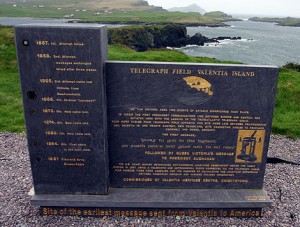 took ten days…provided nothing happened to the ship it set sail on. And it still had to get from out west, if that was where you lived to the east coast. I don’t think a month was far off on this. But then how good was the mail service in Europe? It could still easily take another several weeks for the letter to arrive. Primitive communications for sure. Of course, very few people use telegraph these days. I believe it can still be used to wire money, but electronic transfers are much faster, and often free, so why use it? That is the funny thing about inventions. They are only good until the next big thing that is invented makes the old ones obsolete. That is what things like the cell phone, the internet, and electronic transfers have done to things like letter writing and telegraph.
took ten days…provided nothing happened to the ship it set sail on. And it still had to get from out west, if that was where you lived to the east coast. I don’t think a month was far off on this. But then how good was the mail service in Europe? It could still easily take another several weeks for the letter to arrive. Primitive communications for sure. Of course, very few people use telegraph these days. I believe it can still be used to wire money, but electronic transfers are much faster, and often free, so why use it? That is the funny thing about inventions. They are only good until the next big thing that is invented makes the old ones obsolete. That is what things like the cell phone, the internet, and electronic transfers have done to things like letter writing and telegraph.
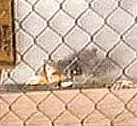 Years ago, many people thought that anyone who was trying to invent an airplane was pretty much insane…saying, that “if man were meant to fly, God would have given him wings” as their reasoning. I’m sure that those same people reiterated their thoughts on the matter, with each new plane crash…basically jumping on the chance to say, “I told you so!” Of course, these days, no one thinks that way, whether they like to fly or not. I guess a fear of flying and the idea that it is a foolish pipe dream aren’t the same things at all. Still, while man has proven over the years that flight is possible, and in fact mostly safe, there are some airplane crashes that that will forever be embedded in our minds. For me, of course, the one that I can picture in my mind at the drop of a hat, is Flight 232 that crashed in Sioux City, Iowa. This was the crash that took the life of my Great Aunt Gladys Pattan Byer Cooper. That pilot was so close to landing that plane safely, and would have, in fact, if the plane hadn’t put in one last effort to turn over due to a major loss of hydraulics. The resulting crash made me wonder how anyone survived…much less the 185 out of 296 people on board. The only reason they survived was the skill of the pilot…and much prayer.
Years ago, many people thought that anyone who was trying to invent an airplane was pretty much insane…saying, that “if man were meant to fly, God would have given him wings” as their reasoning. I’m sure that those same people reiterated their thoughts on the matter, with each new plane crash…basically jumping on the chance to say, “I told you so!” Of course, these days, no one thinks that way, whether they like to fly or not. I guess a fear of flying and the idea that it is a foolish pipe dream aren’t the same things at all. Still, while man has proven over the years that flight is possible, and in fact mostly safe, there are some airplane crashes that that will forever be embedded in our minds. For me, of course, the one that I can picture in my mind at the drop of a hat, is Flight 232 that crashed in Sioux City, Iowa. This was the crash that took the life of my Great Aunt Gladys Pattan Byer Cooper. That pilot was so close to landing that plane safely, and would have, in fact, if the plane hadn’t put in one last effort to turn over due to a major loss of hydraulics. The resulting crash made me wonder how anyone survived…much less the 185 out of 296 people on board. The only reason they survived was the skill of the pilot…and much prayer.

Another plane crash that has stayed in my memory was the crash of the Concorde, that occurred on this day, July 25, 2000. The Concord was a beautiful plane, and by far the most luxurious one of its time. I’m not sure there are even any planes that are more luxurious today…although the Boeing 787 might be. Dubbed the Dreamliner, it gives the indication that it might out class the Concorde. Nevertheless, in its day, the Concorde was the end all, beat all of airplanes. The thing that always amazes me is that sometimes it is the tiniest of things that ends up bringing down a plane. Much like the bird strike that brought down US Airways Flight 1549 on the Hudson River.
The Concorde was downed be a small piece of metal on the runway…that had fallen off of another plane. Air France Flight 4590 left DE Gaulle Airport for New York carrying nine crew members and 96 German tourists who were planning to take a cruise to Ecuador. That piece of metal shredded the tire that ran over it, throwing 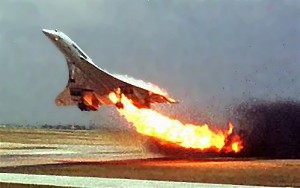 pieces of the tire into one of the engines and fuel tanks, causing a disabling fire. The pilot had no idea what was about to happen, but just moments later the plane plunged to the ground near a hotel in Gonesse, France. A huge fireball erupted and all 105 people on the plane were killed immediately. The Concorde, the world’s fastest commercial jet, had enjoyed an exemplary safety record up to that point, with no crashes in the plane’s 31 year history. That crash, however, marked the beginning of the end for the Concorde. The last flight of the Concorde was on October 24, 2003. What was supposed to mark the first of a future of supersonic, fast paced air travel, was brought to a disappointing halt. Air travel has taken on a much slower pace since that time.
pieces of the tire into one of the engines and fuel tanks, causing a disabling fire. The pilot had no idea what was about to happen, but just moments later the plane plunged to the ground near a hotel in Gonesse, France. A huge fireball erupted and all 105 people on the plane were killed immediately. The Concorde, the world’s fastest commercial jet, had enjoyed an exemplary safety record up to that point, with no crashes in the plane’s 31 year history. That crash, however, marked the beginning of the end for the Concorde. The last flight of the Concorde was on October 24, 2003. What was supposed to mark the first of a future of supersonic, fast paced air travel, was brought to a disappointing halt. Air travel has taken on a much slower pace since that time.
 I am a bit of a forensics buff. Not that I perform the tests that forensic scientists do, I just like watching shows that tell about those tests, and then I try to guess who did the crime. I don’t suppose that I would be the kind of person an innocent man would want to be performing the tests that were going to keep him out…or land him in prison. For an innocent man or woman, being accused of that crime is the beginning of a nightmare. No one wants to believe him, because everybody claims to be innocent…right? Unfortunately, many people accused of crimes are innocent, and in days gone by…before things like DNA matching and fingerprints, the only evidence available was eye witnesses and circumstantial evidence, both of which were far from infallible. Eye witnesses are notoriously unreliable, and it isn’t really their fault, because they were, after all, shook up!!
I am a bit of a forensics buff. Not that I perform the tests that forensic scientists do, I just like watching shows that tell about those tests, and then I try to guess who did the crime. I don’t suppose that I would be the kind of person an innocent man would want to be performing the tests that were going to keep him out…or land him in prison. For an innocent man or woman, being accused of that crime is the beginning of a nightmare. No one wants to believe him, because everybody claims to be innocent…right? Unfortunately, many people accused of crimes are innocent, and in days gone by…before things like DNA matching and fingerprints, the only evidence available was eye witnesses and circumstantial evidence, both of which were far from infallible. Eye witnesses are notoriously unreliable, and it isn’t really their fault, because they were, after all, shook up!!
After spending years in prison, at least fifty people have been exonerated since the dawning of DNA testing. it’s probably hard to say how many have been proven innocent based of fingerprint evidence. And I have to wonder how many have died innocently in prison because they were convicted long before the tests that might have set them free. Fingerprint identification has been used for over a hundred years now, and at one time was considered the best way to prove innocence or guilt. Of course, they aren’t infallible in that respect, because while no two fingerprints have been found to be alike in all those years, it is entirely possible for someone to be somewhere, but not at the time of a crime. If all you have to go on is fingerprints, that can be incriminating…even for an innocent person. Unfortunately, it was not foolproof.
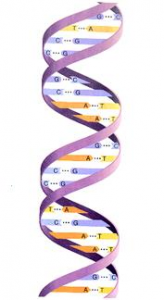
In April of 1953, Watson and Crick published a model of the DNA helix in a one page letter to ‘Nature’. It began with the now famous under statement: “We wish to suggest a structure for the salt of Deoxyribose Nucleic Acid (D.N.A.). This structure has novel features which are of considerable biological interest.” It would take until 1984 before Alec Jefferies and his colleagues would develop genetic fingerprinting, which is using DNA to identify individuals. Finally in 1987 in the United Kingdom, forensic investigators used DNA testing to help solve the ‘Black Pad’ murders and to identify the killer as Colin Pitchfork, who later confessed to the crimes. This was the first case in which DNA evidence is used to determine the identity of a murderer and it also involved a mass screen. It also marks the first case in which a prime suspect was exonerated due to DNA evidence. In 1994 DNA evidence was used in Ireland, and by the 1995 trial of OJ Simpson, it was finally used in America. It seems very strange to me to think that DNA evidence has only been used in the United States for twenty years. To me, it seems like it has been around for a really long time, but that really isn’t so. Nevertheless, on June 28, 1993 DNA evidence cleared Kirk Bloodsworth, an ex-Marine, of a murder for which he had been convicted on this day, July 24, 1984. Sadly, he served nine years before his case was reviewed and he was finally set free.
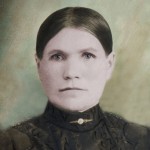
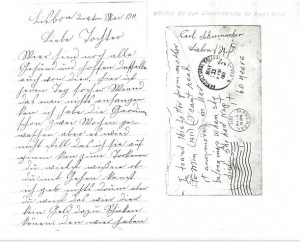 My Uncle Bill Spencer always loved the handwritten letters that were written by his family. It didn’t matter to him if it was nieces or nephews, his siblings, parents, grandparents, aunts, uncles or cousins. He saw in every word, great value…as if it were pure gold. The more I look at old letters, and search for information about my family online, the more I realize that Uncle Bill was really on to something. Seeing the handwriting of our ancestors…be it on a letter, draft card, or photograph always gets me excited. To think that my ancestor actually signed that card, or wrote that letter is very cool. I especially love finding things that were written in some other language. When my grandmother Anna Schumacher Spencer and her brother Albert Schumacher were in school, the teacher made fun of their language. When they came home and told their mother, my great grandmother, Henriette Hensel Schumacher, she decided that German would no longer be spoken in their home. I don’t know if she ever changed her mind on that issue, but if German was spoken, it was not often. So to find a letter written in German by my Great Grandmother Henriette Schumacher to her daughter, my Aunt Min Schumacher Spare is especially exciting. I
My Uncle Bill Spencer always loved the handwritten letters that were written by his family. It didn’t matter to him if it was nieces or nephews, his siblings, parents, grandparents, aunts, uncles or cousins. He saw in every word, great value…as if it were pure gold. The more I look at old letters, and search for information about my family online, the more I realize that Uncle Bill was really on to something. Seeing the handwriting of our ancestors…be it on a letter, draft card, or photograph always gets me excited. To think that my ancestor actually signed that card, or wrote that letter is very cool. I especially love finding things that were written in some other language. When my grandmother Anna Schumacher Spencer and her brother Albert Schumacher were in school, the teacher made fun of their language. When they came home and told their mother, my great grandmother, Henriette Hensel Schumacher, she decided that German would no longer be spoken in their home. I don’t know if she ever changed her mind on that issue, but if German was spoken, it was not often. So to find a letter written in German by my Great Grandmother Henriette Schumacher to her daughter, my Aunt Min Schumacher Spare is especially exciting. I 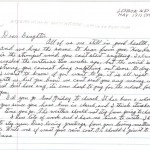
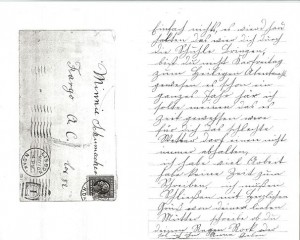 wish that I understood then, what I understand now about the handwriting of my ancestors. I am so excited about to find these great letters from people I have come to feel like I know well.
wish that I understood then, what I understand now about the handwriting of my ancestors. I am so excited about to find these great letters from people I have come to feel like I know well.
When I look at the handwriting of my great grandmother, I see a woman who, even in the face of much pain and adversity, prided herself on her handwriting. Of course, life happens, and we can’t always have the same control of our handwriting that we once might have, but at the time of this letter in May of 1911, her handwriting was pretty and delicate. My great grandmother suffered much with Rheumatoid Arthritis, and yet, I believe that she loved beautiful things, and that she was a delicate and beautiful woman. I know that she was so proud of her family. She would like to help them all she could, but with a large family, and tough times, it was not much. Nevertheless, it was her hope that all of her children would succeed in anything they chose to do…after all, America was the land of opportunity.
Mina Schumacher always wanted to be a teacher, but in the end, she became a bookkeeper. I think she was probably ok with that, but maybe always felt a bit of regret. Nevertheless, her hanwriting to me shows strong 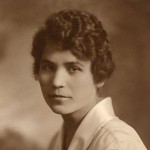
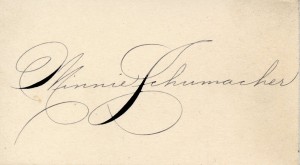 woman who loved the pretty and delicate things in life. She often signed things using beautiful script or calligraphy. It was her own sense of style. Many people never give any thought to the impression their signature will make on another person, but she did, and I loved it since the first time I saw it in my dad’s photo album. It was just as beautiful and graceful as she was. She knew that the handwriting of our ancestors is important.
woman who loved the pretty and delicate things in life. She often signed things using beautiful script or calligraphy. It was her own sense of style. Many people never give any thought to the impression their signature will make on another person, but she did, and I loved it since the first time I saw it in my dad’s photo album. It was just as beautiful and graceful as she was. She knew that the handwriting of our ancestors is important.
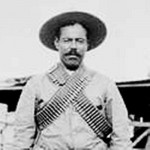 One day in mid 1916 or early 1917, my great uncle, John Spare, who would marry my great aunt, Mina Schumacher on January 8, 1921, was involved in an altercation along the Mexican border, while he was serving in Company B of the North Dakota National Guard. John had enlisted on June 30, 1916 at the age of just 17 years, and his company was assigned to the United States/Mexican border, as we were in the middle of a war with Mexico…really this was border patrol, because there were some pretty dangerous characters running around Mexico, terrorizing the people. One of the most notorious was Pancho Villa. The viciousness of José Doroteo Arango Arámbula…better known as Pancho Villa, was well documented. In a story told by a survivor of his first raid on March 7, 1916, the ruthlessness of this villain is made clear. Pancho Villa and 600 of his renegade followers rode into Columbus, Mexico (population 350) at four o’clock on that morning, riding horses and mules stolen from the Calvary at Camp Turlong just across the border. The camp was the headquarters for the 13th Calvary, and there were about 120 soldiers stationed there. Pancho and his men stole everything of value in the town, and set fire to all its buildings. Many merchants were killed, but the townspeople resisted so strongly that Pancho lost 100 men. He nevertheless, escaped to ride again and continue his raids on both sides of the border.
One day in mid 1916 or early 1917, my great uncle, John Spare, who would marry my great aunt, Mina Schumacher on January 8, 1921, was involved in an altercation along the Mexican border, while he was serving in Company B of the North Dakota National Guard. John had enlisted on June 30, 1916 at the age of just 17 years, and his company was assigned to the United States/Mexican border, as we were in the middle of a war with Mexico…really this was border patrol, because there were some pretty dangerous characters running around Mexico, terrorizing the people. One of the most notorious was Pancho Villa. The viciousness of José Doroteo Arango Arámbula…better known as Pancho Villa, was well documented. In a story told by a survivor of his first raid on March 7, 1916, the ruthlessness of this villain is made clear. Pancho Villa and 600 of his renegade followers rode into Columbus, Mexico (population 350) at four o’clock on that morning, riding horses and mules stolen from the Calvary at Camp Turlong just across the border. The camp was the headquarters for the 13th Calvary, and there were about 120 soldiers stationed there. Pancho and his men stole everything of value in the town, and set fire to all its buildings. Many merchants were killed, but the townspeople resisted so strongly that Pancho lost 100 men. He nevertheless, escaped to ride again and continue his raids on both sides of the border.
In haste, the United States sent soldiers to guard the borders. Unfortunately they were not well equipped, 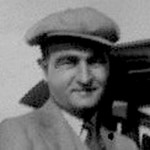 because of the unpreparedness of the military machine at the time. Many of those men, including my great uncle’s company were sent down there without ammunition, and told that those who had ammunition would fight an attack if it came, while the others would dive under the bridge until the attack was over. They neglected to tell them that none of them had ammunition, and the men did not know that until all of them jumped under the bridge at the same time. It was then that the horrible truth was revealed. The hope, apparently, was to make Pancho think this was a large army to be reckoned with, in the hope that they would not try to attack them. They sorely misjudged the ruthlessness of this man, but the good news was that Pancho and his men were already in a gun fight with the 13th Calvary, so they took little notice of this small band of men hiding under the bridge, hoping that the villain and his men didn’t circle around and come back. I don’t know how long Great Uncle John was stationed there, but it is my guess that one day was too much…unless they were given some ammunition, that is.
because of the unpreparedness of the military machine at the time. Many of those men, including my great uncle’s company were sent down there without ammunition, and told that those who had ammunition would fight an attack if it came, while the others would dive under the bridge until the attack was over. They neglected to tell them that none of them had ammunition, and the men did not know that until all of them jumped under the bridge at the same time. It was then that the horrible truth was revealed. The hope, apparently, was to make Pancho think this was a large army to be reckoned with, in the hope that they would not try to attack them. They sorely misjudged the ruthlessness of this man, but the good news was that Pancho and his men were already in a gun fight with the 13th Calvary, so they took little notice of this small band of men hiding under the bridge, hoping that the villain and his men didn’t circle around and come back. I don’t know how long Great Uncle John was stationed there, but it is my guess that one day was too much…unless they were given some ammunition, that is.
Great Uncle John survived the war, and returned to Fargo, North Dakota, where he married my Great Aunt Mina. While he would still serve in the military for a long time, their lives would be happy and blessed with a daughter, Pauline Jessie Spare, who always went by Paula, on March 23, 1922. Pancho Villa continued to wreak havoc in Mexico, and along the border, until 1920, when he retired. For whatever reason, he was given a large estate, which he turned into a Military Colony for his formers Villistas, as his men a become known. Then, in 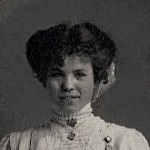 1923, Pancho decided to once again involve himself in Mexican politics, and on July 20, 1923, when he was killed by an assassin, who had probably been hired by the president of Mexico, Álvaro Obregón. When I read that Pancho Villa had been assassinated on this day in 1923, I remembered that Great Uncle John Spare had once had a close encounter with him, and I wondered how he and Great Aunt Min felt when they heard the news. Parral, Chihuahua, Mexico was a long way from Fargo, North Dakota, and a number of years had passed, so maybe they gave it little thought, or maybe they breathed a sigh of relief, knowing what kind of a man he was, and just how close Great Uncle John had come to losing his life that day, along the United States and Mexican Border.
1923, Pancho decided to once again involve himself in Mexican politics, and on July 20, 1923, when he was killed by an assassin, who had probably been hired by the president of Mexico, Álvaro Obregón. When I read that Pancho Villa had been assassinated on this day in 1923, I remembered that Great Uncle John Spare had once had a close encounter with him, and I wondered how he and Great Aunt Min felt when they heard the news. Parral, Chihuahua, Mexico was a long way from Fargo, North Dakota, and a number of years had passed, so maybe they gave it little thought, or maybe they breathed a sigh of relief, knowing what kind of a man he was, and just how close Great Uncle John had come to losing his life that day, along the United States and Mexican Border.
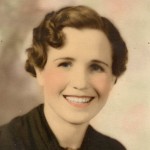
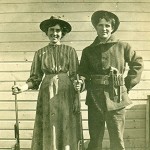 Life in the late 1800s was much different from life today, and in many ways, I must say better. It was a more gentle, moral time. I was once again reading through my Great Aunt Bertha Schumacher Hallgren’s journal, and wondering how it can be that every time I look through it, I see a part of the history of my family that I hadn’t noticed before. For a while now, I have wondered why so little is mentioned in the journal about my grandmother, Anna Schumacher Spencer. Of course, the main reason is that by the time Bertha started writing, my grandmother was married and living in Minnesota or Wisconsin. She is mentioned in the younger years, but it was harder to know much about her daily life then, because things like cell phones, free long distance, and internet did not exist. I find it sad in so many ways that they could not stay in closer contact. I wonder if those of us in this day and age really know just how blessed we are, and how very important it is to stay in touch.
Life in the late 1800s was much different from life today, and in many ways, I must say better. It was a more gentle, moral time. I was once again reading through my Great Aunt Bertha Schumacher Hallgren’s journal, and wondering how it can be that every time I look through it, I see a part of the history of my family that I hadn’t noticed before. For a while now, I have wondered why so little is mentioned in the journal about my grandmother, Anna Schumacher Spencer. Of course, the main reason is that by the time Bertha started writing, my grandmother was married and living in Minnesota or Wisconsin. She is mentioned in the younger years, but it was harder to know much about her daily life then, because things like cell phones, free long distance, and internet did not exist. I find it sad in so many ways that they could not stay in closer contact. I wonder if those of us in this day and age really know just how blessed we are, and how very important it is to stay in touch.
Because so many people had begun to move west, and things like towns, churches, and even schools were more scarce then, often, the religious training of the children happened at home. Bertha mentions in her journal that my great grandparents were dissatisfied by the fact that they were only able to attend church a few times a year. Carl and Henriette knew that this was not the kind of upbringing they wanted for their children. Even though they were both devout Lutherans, they knew that their children really needed to be in church…and they did too. It is so easy to slide in one’s faith when the family isn’t getting weekly or even more often, teaching in a church setting. So, Great Grandpa sold the quarter section of land that they owned, and purchased 320 acres just three miles east of Lisbon, North Dakota. Bertha remarks that this was a nice home with one of the few bathrooms in the country, and an artesian well. It must have been like moving into a castle. We take such things for granted these days. They did not.
The artesian well helped to form a ten acre lake, which my grandfather, Allen Spencer later stocked with catfish. Great Grandpa Carl Schumacher built a safe flat bottom boat for the younger children, so they could all enjoy the lake. This was a time of joy and happiness for the family. Life was changing, the children were growing up and moving out on their own, and new babies were coming too. Times were getting easier 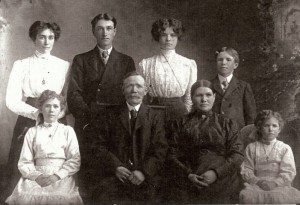 with new inventions every day designed to make life easier. Nevertheless, the problem of distance remained. I’m sure that Bertha would have written more about her older siblings families, had she had the opportunity to know them better. As a writer myself, I can relate to that. There are family members about whom it is more difficult to write, because I am not around them often. There are others about whom I know much, and so writing is easy. Nevertheless, if I write about them or not, they are all dear to me and in my thoughts often. I am, however, grateful to Bertha for her writings and the insight it has brought to me. Bertha has been an inspiration and a blessing to me. Through her writings, I feel like I know people I never met, and that is a limitless gift. It just keeps on giving.
with new inventions every day designed to make life easier. Nevertheless, the problem of distance remained. I’m sure that Bertha would have written more about her older siblings families, had she had the opportunity to know them better. As a writer myself, I can relate to that. There are family members about whom it is more difficult to write, because I am not around them often. There are others about whom I know much, and so writing is easy. Nevertheless, if I write about them or not, they are all dear to me and in my thoughts often. I am, however, grateful to Bertha for her writings and the insight it has brought to me. Bertha has been an inspiration and a blessing to me. Through her writings, I feel like I know people I never met, and that is a limitless gift. It just keeps on giving.
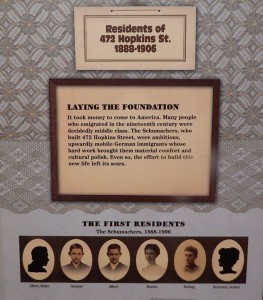 About a year ago, my cousin, Angie Schumacher Barden contacted me about a historic house that had been built by one Albert Schumacher and his family back in 1888, after they had moved from Henderson, Minnesota to Saint Paul, Minnesota. Angie wondered if these people might have been related to us. I told her that it would not surprise me, since Albert and Henrietta, who is his wife, are names that are in our family too. I expect that somewhere along the way, we will find that they are an aunt and uncle of some sort. I wish I could say that with this writing, I had found the connection, but I cannot say that yet. I have no doubt that in the near future I will find the connection, if it exists, but I have sometimes had to wait a long time, so you never know. Recently, Angie sent me pictures of the information she found at a museum, and I must say that I find it very interesting. The pictures tell not only that the Schumacher family built the house , but much of their family history, and it is from that information that my story will begin.
About a year ago, my cousin, Angie Schumacher Barden contacted me about a historic house that had been built by one Albert Schumacher and his family back in 1888, after they had moved from Henderson, Minnesota to Saint Paul, Minnesota. Angie wondered if these people might have been related to us. I told her that it would not surprise me, since Albert and Henrietta, who is his wife, are names that are in our family too. I expect that somewhere along the way, we will find that they are an aunt and uncle of some sort. I wish I could say that with this writing, I had found the connection, but I cannot say that yet. I have no doubt that in the near future I will find the connection, if it exists, but I have sometimes had to wait a long time, so you never know. Recently, Angie sent me pictures of the information she found at a museum, and I must say that I find it very interesting. The pictures tell not only that the Schumacher family built the house , but much of their family history, and it is from that information that my story will begin.
Albert and his wife, Henrietta arrived in Henderson, Minnesota in 1864. Their homeland was Germany. Now to my family, I’m sure you are beginning to see some similarities already. Albert had been trained as a confectioner in Germany, making him a really sweet guy in every sense of the word. When he arrived in Henderson, he saw he opportunity to to use those skills, so he opened up a sweet shop. He later worked for several years in the store of a merchant named Henry Poehler. He became the proprietor of the Sibley County Saloon in 1878, when Lorenz Oberst agreed to sell it to him. In 1888, decided to move his family to Saint Paul, Minnesota, where they opened up Schumacher’s Pharmacy. He had wanted to move for some time, and finally found a buyer for the saloon in one, Charles Pruetz.
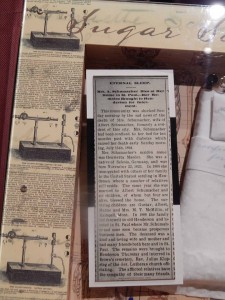
Albert and Henrietta, and the two of them had welcomed six children into the world. Joyous events to be sure, but into each life some rain must fall, and they were no exception. Of their six children, only Gustav, Albert, Margaret, and Hedwig survived. Arthur died at nine months and Camilla died after only ten days. Those were hard times for the family, but they had to go on for the other children.
Once they moved to Saint Paul, Albert and his sons built the house at 472 Hopkins Street. The family lived there from 1888 to 1906. On July 15, 1894 the family would again experience loss, when Albert’s beloved wife, Henrietta passed away. While Albert stayed in the house for six more years, I doubt if those last years were at all as happy as the first years had been. I’m sure that if those walls could talk, they would have many stories to tell about the years the family spent there. I look forward to learning more about this amazing family, and to find out for sure, if they are related to us.
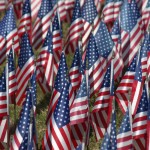 Americans are a people who have no problem speaking their minds. I suppose it all goes back to the reasons we left England in the first place. We were only allowed to believe certain things, and if we chose to be different, we could have been killed or imprisoned. It is what our nation was built on in more ways than just religion. The point was supposed to be that we were free to live our lives as we chose to, within a very few certain guidelines. For the most part, things went along smoothly…until November of 1860, when President Lincoln was elected to the presidency, that is. The people of the Deep South felt that their way of life was being threatened, in that they held slaves, and Lincoln was against slavery, as were the Northern states, or most of the people in the Northern states anyway. Of course, this whole issue brought our nation to war, a really sad thing when two sides of a nation war against each other.
Americans are a people who have no problem speaking their minds. I suppose it all goes back to the reasons we left England in the first place. We were only allowed to believe certain things, and if we chose to be different, we could have been killed or imprisoned. It is what our nation was built on in more ways than just religion. The point was supposed to be that we were free to live our lives as we chose to, within a very few certain guidelines. For the most part, things went along smoothly…until November of 1860, when President Lincoln was elected to the presidency, that is. The people of the Deep South felt that their way of life was being threatened, in that they held slaves, and Lincoln was against slavery, as were the Northern states, or most of the people in the Northern states anyway. Of course, this whole issue brought our nation to war, a really sad thing when two sides of a nation war against each other.
It is a difficult thing when so many people have such differing beliefs about the same issue. And sometimes it gets so ugly, that I have to wonder about the sanity of some people. When people burn or otherwise deface our flag, sometimes in horribly disgusting ways, or do the same to Bibles and other religious books, it is disrespectful. What I find especially disturbing is that these same people want respect for their cause or lifestyle, but they will not give the same respect for the cause or lifestyle of others. It really is a two way street. I know that a lot of people are calling for the removal of the Confederate Flag from…everywhere, but in reality it is a part of our history. We need to remember that because they lost the battle, it  does not mean they were not brave in the fight. Lately, I have seen some shocking displays in this nation. Digging up the graves of a general and his wife, because he fought for the South, and taking shows off the air because they have a reference to a Confederate Flag in them. Political Correctness has tipped the balance of this nation to the point of insanity. It must stop, or we will have another war here. We have already had a threat of states wanting to secede from the union. It is a sad state for this great nation to be in.
does not mean they were not brave in the fight. Lately, I have seen some shocking displays in this nation. Digging up the graves of a general and his wife, because he fought for the South, and taking shows off the air because they have a reference to a Confederate Flag in them. Political Correctness has tipped the balance of this nation to the point of insanity. It must stop, or we will have another war here. We have already had a threat of states wanting to secede from the union. It is a sad state for this great nation to be in.
In the end of the Civil War, the South lost the war, the slaves were freed, and given their proper rights. No, it wasn’t the last of the battles over this issue, unfortunately, but the healing of this nation began. The eleven states that had seceded from the Union…Alabama, Florida, Georgia, Louisiana, Mississippi, South Carolina, Texas, Arkansas, North Carolina, Tennessee and Virginia, were returning one by one. Change was coming and it would slowly come to be accepted. I suppose that, as in the Civil War, the people who are fighting for their rights these days, consider the battles well worth the outcome, and maybe they are, but in many ways, we have forgotten that the people of the other side of the issue have rights too. The country was largely founded on a live and let live way of life…whether you agree with them or not. This may not be the perfect way for our nation to be, but it is as close as we can get. As with the eleven states who returned to the Union, I think it is important to consider the feeling of those who have lost the battle you felt the need to win, because in most cases, they are good people too. On this historic day, as our nation became united again, Georgia became the  last state to be readmitted to the Union. They returned, because whether they agreed with every thing this nation stood for or not, they still knew that this was a great nation, and one they wanted to be a part of. I believe that was the case of the Cowboys and Indians. We all know that the Indians lost to the cowboys, but that does not make them any less a proud people, nor does it make them any less brave. They deserve respect, as do all the people who have lost the battles that have gone on in this nation about political correctness, policy change, or the battle of the North and South. In the words of Abraham Lincoln, “A house divided against itself cannot stand.” Whether we agree with things or disagree, we must stand united…lest we forget that the rights we take from another today, could be taken from us tomorrow.
last state to be readmitted to the Union. They returned, because whether they agreed with every thing this nation stood for or not, they still knew that this was a great nation, and one they wanted to be a part of. I believe that was the case of the Cowboys and Indians. We all know that the Indians lost to the cowboys, but that does not make them any less a proud people, nor does it make them any less brave. They deserve respect, as do all the people who have lost the battles that have gone on in this nation about political correctness, policy change, or the battle of the North and South. In the words of Abraham Lincoln, “A house divided against itself cannot stand.” Whether we agree with things or disagree, we must stand united…lest we forget that the rights we take from another today, could be taken from us tomorrow.

